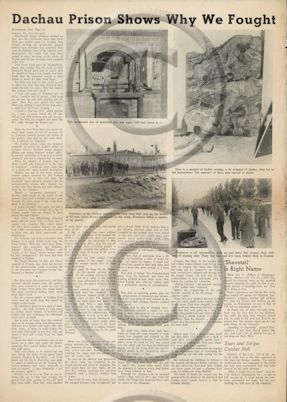 Dachau 1945
Dachau 1945
"The world goes on being awash in wickedness, arrogance, mediocrity, but Antelme showed us that the business of living may be accomplished with goodness, with modesty, and with nobility."
Robert Antelme was a French writer and resistance worker. He was one of the over 30,000 inmates liberated from Dachau by the 45th Division. He died in 1990. From Edgar Morin, "Homage to "Robert Antelme," Le Monde, November 2, 1990.
From Alex
Kershaw's The Liberator.
As a member of the 45th Infantry Division at
the time of the liberation of Dachau, Felix A. Cizewski is
recognized as a liberator.
However, on behalf of my late father whom I am sure would agree with this qualification, the hard work of liberation was done by the combat troops of the 45th who defeated the SS guards who resisted liberation.
Felix was a member of the 45th Signal Company and was providing communications support for he combat troops who were fighting to liberate Dachau.
However, the 45th Signal Company arrived at Dachau the day after liberation.
The combat troops appreciated the support from troops such as my father. One shared that it was the luck of the draw who ended up in the combat units and who was assigned to support units such as my father.
However, on behalf of my late father whom I am sure would agree with this qualification, the hard work of liberation was done by the combat troops of the 45th who defeated the SS guards who resisted liberation.
Felix was a member of the 45th Signal Company and was providing communications support for he combat troops who were fighting to liberate Dachau.
However, the 45th Signal Company arrived at Dachau the day after liberation.
The combat troops appreciated the support from troops such as my father. One shared that it was the luck of the draw who ended up in the combat units and who was assigned to support units such as my father.


